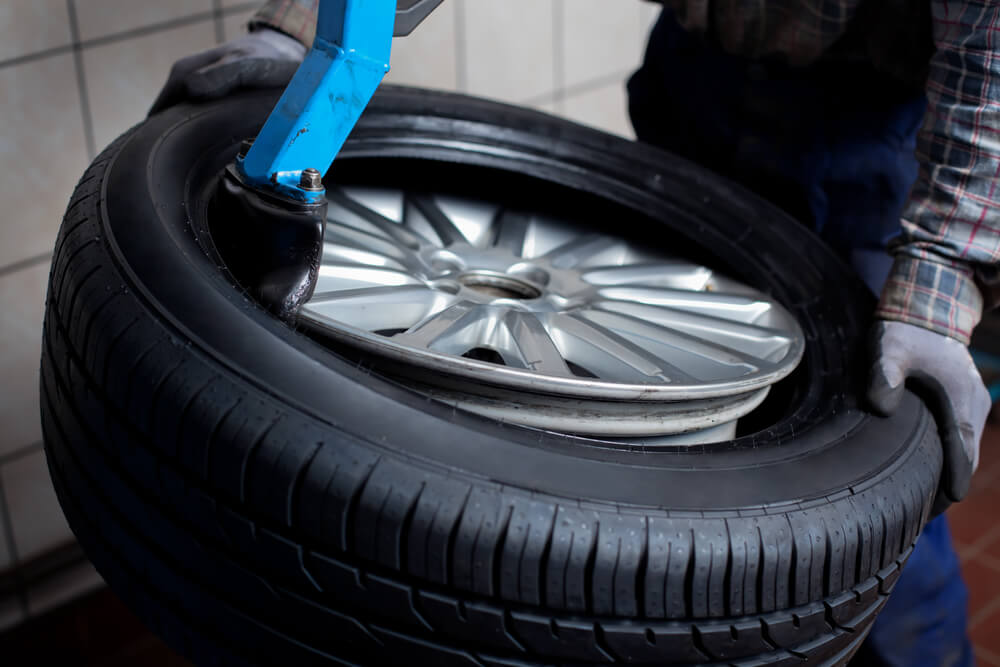
It’s easily done, perhaps, but never overlook or take for granted the condition of the tyres on your caravan. Because of the critical role they play, taking the condition of the tyres for granted could prove a potentially catastrophic oversight.
The tyres on your caravan are, after all, the only contact between the road and the trailer you are towing – sometimes at relatively high speeds. A blowout or some other failure may have very dire consequences.
Reflecting that importance from the point of view of road safety, there are also legal obligations relating to the condition of the wheels and tyres. The Camping and Caravanning Club publishes a helpful guide to the tyres on your caravan and warns that you are legally required to ensure that the tyres not only on the car towing your caravan but the caravan itself must be “fit for purpose” and free of any defect that may cause a road safety problem.
This means that in addition to the tyres on your caravan being inflated to the correct pressure, they must also:
- be of the same specification as other tyres on the trailer;
- need a minimum tread depth of 1.6 mm running continuously throughout the central three-quarters of the tread and around its whole circumference (just as the tyres on your car);
- be free of tears, bulges, lumps, or any other indication of potential failure;
- be free of tears or cuts extending for more than 25 mm or across more than 10% of the tyre’s width; and
- no part of the tyre’s cord or ply must be exposed.
You may be prosecuted for using the caravan with a defective tyre or in an otherwise unroadworthy condition – and, for that reason, the Caravan and Motorhome Club recommends that you replace the tyres on your caravan at least every five years and never use those that are more than seven years old.
Further reading: How old are your tyres?
Wheels
It’s one thing to be taking care of the condition of the tyres and keeping them in a fit and roadworthy condition, but don’t forget about the wheels too.
The wheels on your caravan are specifically designed for the job they do. They might look the same but are different from the wheels you normally find on cars – as a visit to the aptly named manufacturer Wheels will illustrate.
They are different largely because of their need to withstand greater pressures than car wheels. They are therefore generally stronger to support the weight of the caravan – usually on just two wheels – and because of the caravan’s lack of the sophisticated suspension system you might find on a car.
As a matter of routine maintenance, the wheels need to be checked to ensure that the rims are not rusted, scuffed, or cracked. The stud bolts also need to be in sound condition and fit snuggly into the stud holes – which should not be elongated or damaged.
Caravan tyres – a special case
Many experienced drivers and caravan owners like to think that they know a thing or two about their vehicles – including the tyres.
Yet it’s still possible to see some poor practices in this area. Incredibly, it’s still possible to occasionally see towing vehicles with pristine tyres but caravans (or trailer tents) with tyres that should have been scrapped or recycled a long time ago.
This is exceptionally dangerous. The tyres on a towed vehicle can make it highly unwieldy and unpredictable if they’re in poor condition – irrespective of how good the tyres on the towing vehicle are.
The National Tyre Distributors Association (NTDA) explains how the tyres on your caravan are likely to be in a special case and need to be viewed somewhat differently from those on the car you use practically every day.
The tyres on your car are likely to wear out simply because of the use they get; with the tyres on your caravan, the problem is likely to be quite the opposite. Rather than mileage, the tyres on your caravan are much more likely to be vulnerable to the simple process of ageing. These tyres are vulnerable because:
- they tend to take more of the shocks and bumps from the road than those on your car – since the caravan’s suspension is less sophisticated and has less dampening effect than your car’s;
- the rubber from which the tyres are made suffers the effects of degradation simply through the effects of sunlight and the atmosphere – even when they are not being used, therefore, their condition is still deteriorating; and
- wear is especially pronounced when the tyre is under pressure from the weight of the caravan itself – when the trailer is left for long periods of time resting on the same few square inches of tyre rubber, therefore, wear is most pronounced.
Care needs to be taken about this last vulnerability in particular. When the caravan is being stored for any length of time, the wheels need to be rotated from time to time to even out the load on particular patches of the tyre.
An even better precaution is to remove the wheels entirely and take the weight of the caravan on axle stands. The removed wheels may then be stored horizontally and out of direct sunlight.
When the new season begins and it is time to refit the wheels, that is a good time to give the tyres an especially close inspection. Remove small stones or other objects embedded in the tread and use detergent to remove paint, oil, or fuel from the tyre’s surface.
The law requires your caravan tyres always to have just the same minimum tread as your car – 1.6mm – but remember that they are likely to need replacing long before the tread is worn down to anything like this low point.
The Caravan and Motorhome Club echoes the advice given by the NTDA, pointing out that the average mileage covered by a caravan is only around 2,000 miles a year – seeming to give many years of use in terms of the rubber actually wearing down.
But in addition to the natural ageing processes during storage and exposure to daylight, the tyres on a caravan tend to be subject to small but quite repetitive impacts during normal use – there are usually only two wheels supporting the whole weight of your caravan, which is typically about a quarter of the weight of your four-wheeled car.
The overriding lesson, from both tyre distributors and the Caravan and Motorhome Club, is that, whatever their visual appearance and however intact your older tyres may be, they need to be regularly checked by a professional – remembering that any tyre starts to age the moment it is manufactured and not the year it is fitted to your caravan.
Checking your tyres
It can send something of a shiver down your spine when you see someone ‘testing’ their tyres by giving them a swift kick. We might all have done it at some time but know full well that it is simply not a reliable way of testing them.
Tyre pressures need to be checked regularly and accurately, of course. Some caravan tyres are inflated to higher than usual pressures (50 psi) and these need to be given especially careful checks for evidence of deterioration.
There are many professional tyres pressure gauges on the market and your owner’s manual may make recommendations. Avoid ‘cheap and cheerful’ gauges.
Then there is the question of the correct tyre pressure for your towed vehicle. The first starting point again is your owner’s manual. If that’s missing, you should be able to find out the type of tyres you need by researching your caravan type and configuration on the internet. You can also take the tyre’s number off its sidewall and research that.
Don’t forget to take into account the loading capacity of your caravan and how far off is the weight, one way or another, for an average outing when towing your caravan – make the necessary adjustments in tyre pressures accordingly.
Finally, inspect your tyres carefully. You’re looking for bald patches, uneven wear, cracks, flaking rubber and patches of permanent discolouration. You’re also looking for tread that’s worn below or is getting close to, legal limits.
Don’t take chances in this area. Not only do you risk the safety of yourself and other road users, but you could face a fine plus points on your licence for every tyre that falls short of the legal requirement. So, get the opinion of an expert if you’re in any doubt.
Remember, your touring caravan insurance may become invalid if you fail to maintain your vehicle in a roadworthy condition and that includes its tyres.
Adjust for conditions
Remember that certain road or environmental conditions may call for a change in the running pressure of your tyres. Consult your manual but some of the occasions on which you might want to be especially vigilant include:
- icy and snowy conditions;
- unusually hot weather;
- a heavier or lighter load in your caravan than normal;
- taking your caravan off-road (as an entirely separate issue, make sure your caravan insurance actually permits this); and
- towing over extended distances at higher than average normal speeds.
Warning – used and sub-standard tyres
The quality of your tyres is of the utmost importance. It’s always best to avoid re-using tyres – or buying cheaper re-tread or remould tyres – if at all possible.
Whether new or used, make sure that your tyres are a recognised make and not one that neither you nor anybody else has ever heard of. Even if you are given every reassurance as to its quality, it’s probably not a chance worth taking.
Summary
Try to avoid the trap of slipping into thinking that it’s only your car’s tyres that need to be looked at closely.
Your insurance provider certainly won’t see it that way and the police will most likely be inclined to agree with them!

